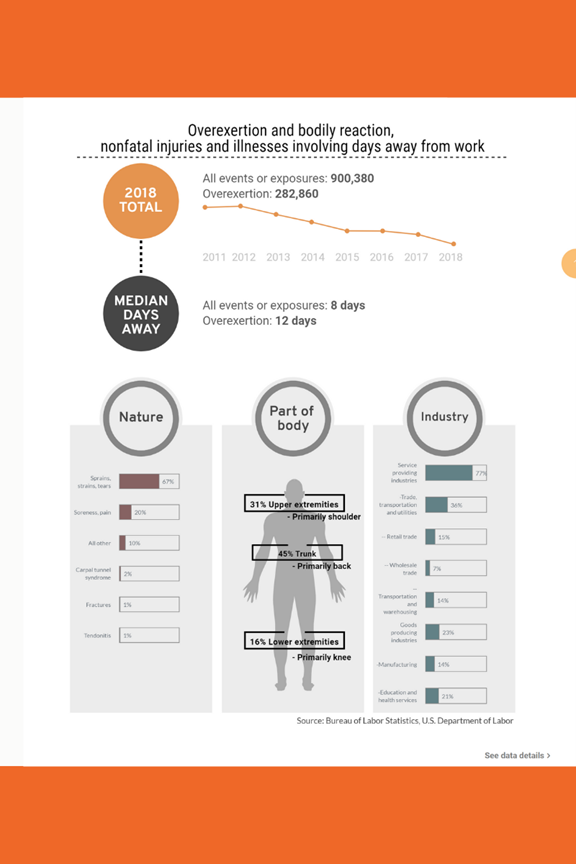According to the National Safety Council, overexertion and bodily reaction is the leading non-fatal injury event involving days away from work, representing 31 percent of all injuries. While the death rate is relatively low in such injuries, the injury rate is quite high (282,860 injuries in 2018).
Facts about overexertion in the workplace
- Injuries are highest in service providing injuries and most likely to be sprains, strains and tears.
- Injury rates have been dropping since 2011
- The average time away from work is 12 days, which is 50 percent higher than the average for most workplace injuries.
- Back injuries make up almost half of all overexertion injuries
- The estimated cost of overexertion is $9.8 billion
Causes of overexertion injuries in the workplace
- Non-impact injury or illness resulting from excessive physical effort directed at an outside source
- Repetitive use injuries
- Repetitive motion injuries
Many people think of carpal tunnel when they think of overexertion, but the reality is most injuries are caused when people life, move, push or pull more than they should. The greatest challenge for employers is figuring out which employees can handle what load, as each person’s physiology is unique. Additionally, employees, and people in general, overestimate how much they can lift safely. This is universally true, and it is the base cause for overexertion problems.

What employers can do to reduce overexertion claims?
Employers can take several steps to reduce overexertion claims.
- Engineering controls for mechanical assistance
- Offer shorter, more frequent breaks
- Encourage reporting
- Test worker’s capabilities before they begin the job
Accurately assessing worker’s abilities
At Workplace Safety Screenings, many of the companies we work with have employees in danger of overexertion injuries. We recommend machine-assisted physical assessment, using the BTE machine.
The employer can enter the requirements for the job (e.g., lifting 50 pounds). BTE EvalTech uses isometric evaluation, which means that it assesses each individual's isometric strength, then provides a baseline for that employee, which can be measured against the pre-set requirements. There is little to no chance of injury during the test, and the accuracy is far higher than a typical physical assessment. This has dramatically reduced the number of worker's compensation cases for companies that choose to employ the BTE EvalTech.

.png?width=500&height=500&name=Blue%20and%20White%20Classic%20Shield%20Financial%20with%20Star%20Logo%20Design%20(1).png)


